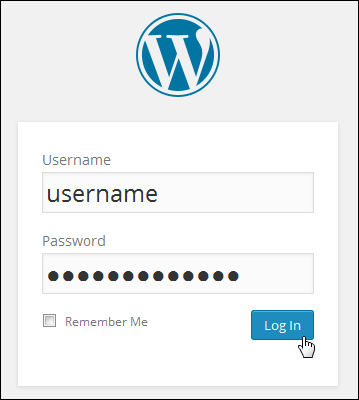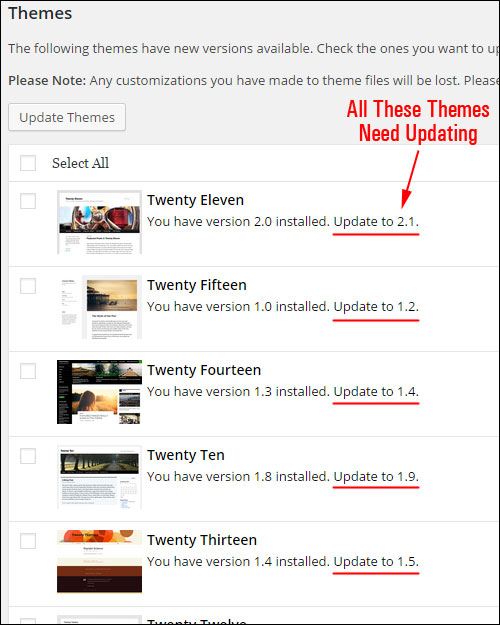

In this tutorial, you will learn how to update a WordPress theme with just a few clicks inside your dashboard.
Updating WP Themes – Best Practices Checklist


We recommend going through the handy checklist below before going through the upgrade process, to ensure that no settings or customizations are lost and that your update goes smoothly.
1. Back Up Your Site Files And Data
Backing up your site before making any changes to your site is essential. If something goes wrong, you can always restore.
If you don’t want to perform manual backups, there are many plugins you can use. Learn about a WordPress backup plugin that can automate your backup process here:
2. Check The Theme Update Notes
Changes made to the WordPress software can affect the functionality of certain themes. Depending on the theme you have installed, there may be some release notes included with an update which provides an overview of any new features, improvements, security fixes or any other changes in the new theme version.
If the theme changes seem irrelevant or unimportant, you can skip the update. Otherwise, you should update.
3. Test The Theme
If you can, it’s a good idea to check the theme before installing it on your site.
![]()
![]()
Typically, web service providers will set up a test site where they can test the latest version of an installed theme, track any bugs and check to see if the new theme version doesn’t conflict with any existing plugins or settings before applying and activating it on a live site.
If you’re managing your own website, you can set up a test WordPress site on a subdomain or a separate domain name with the same configuration settings (e.g. plugins) and play with the new theme versions on your test site before applying it to your main website.
4. Search Online
Before updating your theme, it’s a good idea to do a quick search online to see if other theme users have reported any issues with the new theme version.
You can type the theme name and version into Google, and search the theme developer’s support forum (many developers provide forums for paid WordPress themes, and even for some free plugins).
5. Is Your Theme Heavily Customized? Use A Child Theme
If you have made extensive customizations to your existing WordPress theme files, updating your theme may result in your custom modifications being overwritten. To prevent losing your theme modifications, therefore, we recommend you learn how to create “child themes”.
A WordPress child theme is a theme that inherits the functionality of another theme, called the parent theme, and allows you to modify, or add to, the functionality of the parent theme. When you update the “parent theme”, all customizations get preserved through the “child theme.”
If you plan to customize your theme files, then we recommend becoming familiar with the use of child themes, especially if you plan to use a theme that gets regularly updated. You can learn more about child themes by searching online, or visit the WordPress Codex child theme page here:
![]()
![]()
As you will see below, the actual process of updating a WordPress theme is fairly easy. The bit of this process that takes the most time and effort to complete is the preparation involved prior to upgrading.
Some people don’t upgrade their WordPress themes regularly, while many upgrade without going through all of the steps listed in the section above. As mentioned earlier, the above are “best practice” methods to help you avoid problems. Ultimately, it is your responsibility as a website owner to protect your online assets.
How To Upgrade Your WP Themes – Step-By-Step Tutorial
Upgrading your theme in your dashboard is simple.
Log into your WordPress admin area …


Depending on the theme(s) installed on your website, you may receive occasional notifications in your WordPress Dashboard that your theme(s) need updating …


Updating WordPress themes in the dashboard is easy. You can update your site’s theme via the “Themes” feature, or the “Updates” area.
Updating Your Theme Via The “Themes” Area
You can see which themes need updating by going to your Themes area.
Select Appearance > Themes in your WordPress admin menu …


This opens up the “Themes” page …


Themes with new versions display an “Update Available” message over the theme’s thumbnail image …


Locate the theme you want to update and click on the “Update Available” message.
When the theme details window opens up, click on update now …


WordPress automatically updates your theme in seconds …


Your theme is now up-to-date …


Repeat the process described above to update all of your out-of-date themes, or use the method described below to bulk upgrade multiple themes at once.
Updating WordPress Themes Via The “Updates” Section
Update your WordPress themes via the “Updates” screen as follows:
To view all themes installed in your website that require updating, click on Dashboard > Updates …


This opens up the Updates screen. Scroll down to the Themes section …


Check the box next to all the themes you want to update and click on Update Themes to complete the bulk update process …


WordPress will automatically update all of your selected themes …


Congratulations! Now you know how to upgrade your WP themes in the WP dashboard.
***
"Learning WordPress has been a huge stumbling block for me. I've been looking for something that covers absolutely everything but doesn't cost an arm and a leg. Thank you so much ... you have just provided me with what I have been looking for! Truly appreciated!" - Tanya
